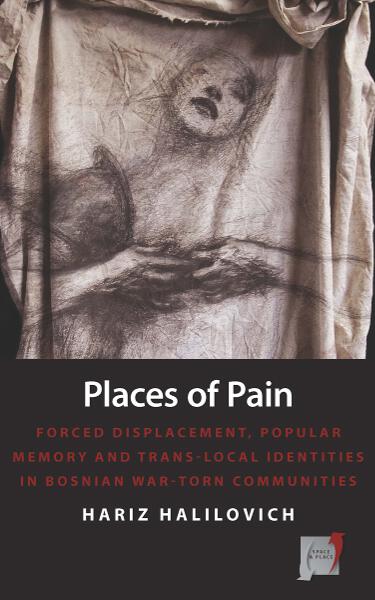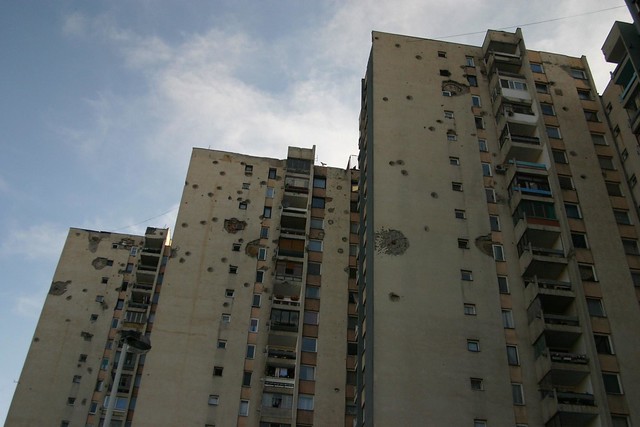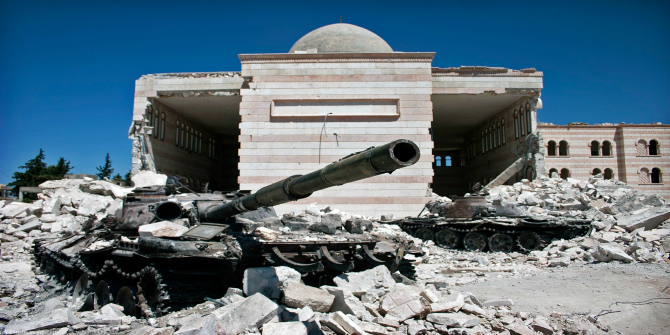For displaced persons, memory and identity is performed, reconstructed, and renegotiated daily. In Places of Pain, Hariz Halilovich considers the places of pain and belonging that were lost during the 1992 – 95 war in Bosnia and Herzegovina, as well as the survivors’ new places of resettlement in Australia, Europe and North America. Joe Laking concludes that Halilovich’s work may find relevance in studies of war and migration not just in this context but all over the world.
 Places of Pain: Forced Displacement, Popular Memory and Trans-Local Identities in Bosnian War-Torn Communities. Hariz Halilovich. Berghahn Books. March 2013.
Places of Pain: Forced Displacement, Popular Memory and Trans-Local Identities in Bosnian War-Torn Communities. Hariz Halilovich. Berghahn Books. March 2013.
The ‘Balkan conflict’ (herein referred to as the 1992-1995 Bosnian war) was the first major international conflict that I can remember growing up. My memories of it are vague, but as a child ‘the Balkans’ conjured images of an area eternally and irretrievably divided by strict identity politics. As Slavoj Zizek points out, a lot of ‘Western’ Europe has held “the perception of Balkan as the terrain of ethnic savagery and intolerance”, while noting that the demarcation of where ‘the Balkans’ actually begins is a contested topic.
Places of Pain by Hariz Halilovich pulls together a group of personal narratives from people that trouble this perception and allow him to consider and reconsider theories often put forward about diasporic populations. These narratives are mainly gathered from civilians who were forced to flee their homes in the course of the 1992-1995 Bosnian War. The book consists of six chapters with a photographic interlude, each chapter taking a theme and using narratives to explore ideas and issues of trans-nationalism and trans-localism, the experience of forced displacement and (re)placement, ‘official’ memorials and commemoration vs. popular memory, and some of the gendered aspects of the forced displacement.
While the theoretical application of the narratives is arguably their primary purpose, it is worth mentioning that readers may find the emotional content of the personal stories most striking. The sense of grief is palpable, particularly in the introduction and first three chapters, which focus on stories of displacement and the injustices and co-option of official memorials. It is difficult to provide any quotes from these narratives without removing them from their context and reducing them to the ‘genocide spectatorship’ derided by the author and one of his interviewees (p.93-97).
The content of the narratives is undoubtedly moving, however, the method by which they were gathered may give some reflection of the care and light in which they are crafted. Halilovich employs a methodology of ‘reflexive ethnography’ where he explicitly recognises and makes use of his status as a ‘cultural insider’. Halilovich left Sarajevo in 1993, living in Europe for a time (his son was born in Germany) and ultimately emigrating to Australia. While I could be imparting a quality that would be present in any retelling of the narratives provided, I feel that Halilovich’s status as cultural insider meant that there was a level of care taken in the retelling that might not have otherwise been so.

Another effect of the personal stake that Halilovich holds in his research is evident from the politics that he brings. His theoretical stance could broadly be characterised as being in the poststructuralist or postmodern stream of thought. The emphasis is placed on performative nature of memory, identity and sense of belonging and the heterogeneity of groups that are often uncritically presented as homogenous blocs. Politically, this sets him at odds with a brand of ethno-nationalism that preceded, precipitated and continues after the 1992-1995 Bosnian War.
The narratives presented challenge this brand of ethno-nationalism that split the population of Bosnia-Herzegovina into three homogenous ethnic blocs (Bosniaks, Bosnian-Croats and Bosnian-Serbs). The focus is placed on the local, or Zavicaj, which is defined as:
“emotional or intimate home, local homeland, place where one grew up, place of belonging, one’s native region, local community.” (xvi)
By focusing on how people who have been forcibly displaced relate to the land that they left and highlighting local customs that are enacted and beliefs held, Halilovich is able to trouble the notion of these static, homogenous ethnic blocs. This refocusing on the local also allowed Halilovich to reconsider how displaced people interact with their country of origin and diasporic communities are established. Rather than mourning the loss of their country or nation state or establishing communities along fixed ethno-national lines, he found that people longed to recreate their local area. The diasporic communities that he worked with were formed around regions of Bosnia, such as the Podrinje region, they spoke local dialects and tended to continue to observe local customs. This came to be referred to as trans-localism, as opposed to trans-nationalism, which theorised the establishment of communities along national lines.
The continued challenge to nationalistic thought is further explored in how memory and memorials are used by officials. Halilovich looks at examples in which the memory of atrocities and people’s pain has been appropriated, rewritten or denied for political gain. This abuse of memory and memorials is not limited to one ethno-nationalist group. Examples are given of how the government of Republika Srpska has rewritten history, denying the suffering and killing that happened at particular sites. Within Sarajevo it is suggested that the memory of the resistance and resistance fighters has been ‘Islamised’ and the annual memorial to mark the Srebrenica genocide has been turned into a ‘genocide festival’, used by a variety of national and international politicians.
In the face of this official (mis)use of memory, Halilovich suggests that there is a counterforce or resistance that can be found when talking to and engaging with local people. In his interviews he found evidence of what he refers to as ‘popular memory’ (following Foucault’s theories), which was found to resist fixed, generic or nationalist narratives. My favourite example of popular memory is the statue of Bruce Lee erected in Mostar in reaction to the building and proliferation of religious statues that had strong ethno-nationalist attachments.
Halilovich dedicates a chapter to considering the gendered nature of the statistics and measurements of the official records of forced displacement, something that is often ignored. While this is positive, the inclusion of these considerations as an autonomous chapter feels a little like an afterthought (particularly as it is the final chapter before the conclusion). It also highlighted how uncritical he had been about ‘popular memory’, which while resisting ethno-nationalistic claims continued to maintain exclusionary gendered boundaries.
In June the United Nations Refugee Agency (UNHCR) published a report stating that at the close of 2012 there were 45.2 million people that the UNHCR considered to be forcibly displaced. This counted refugees who left their country of origin as well as internally displaced people who had left their home, but remained within the borders of ‘their’ country. So although Halilovich’s book focuses on the experiences, memories and sense of identity of people who were forcibly displaced in the 1992-1995 Bosnian war, the theoretical insights on offer could be considered to be much more widely applicable.
——————————————————-
Joe Laking studied MSc Gender and Social Policy at the London School of Economics, graduating in 2010. He is now studying for an MA in Social Work at Goldsmiths, University of London. Read reviews by Joe.






